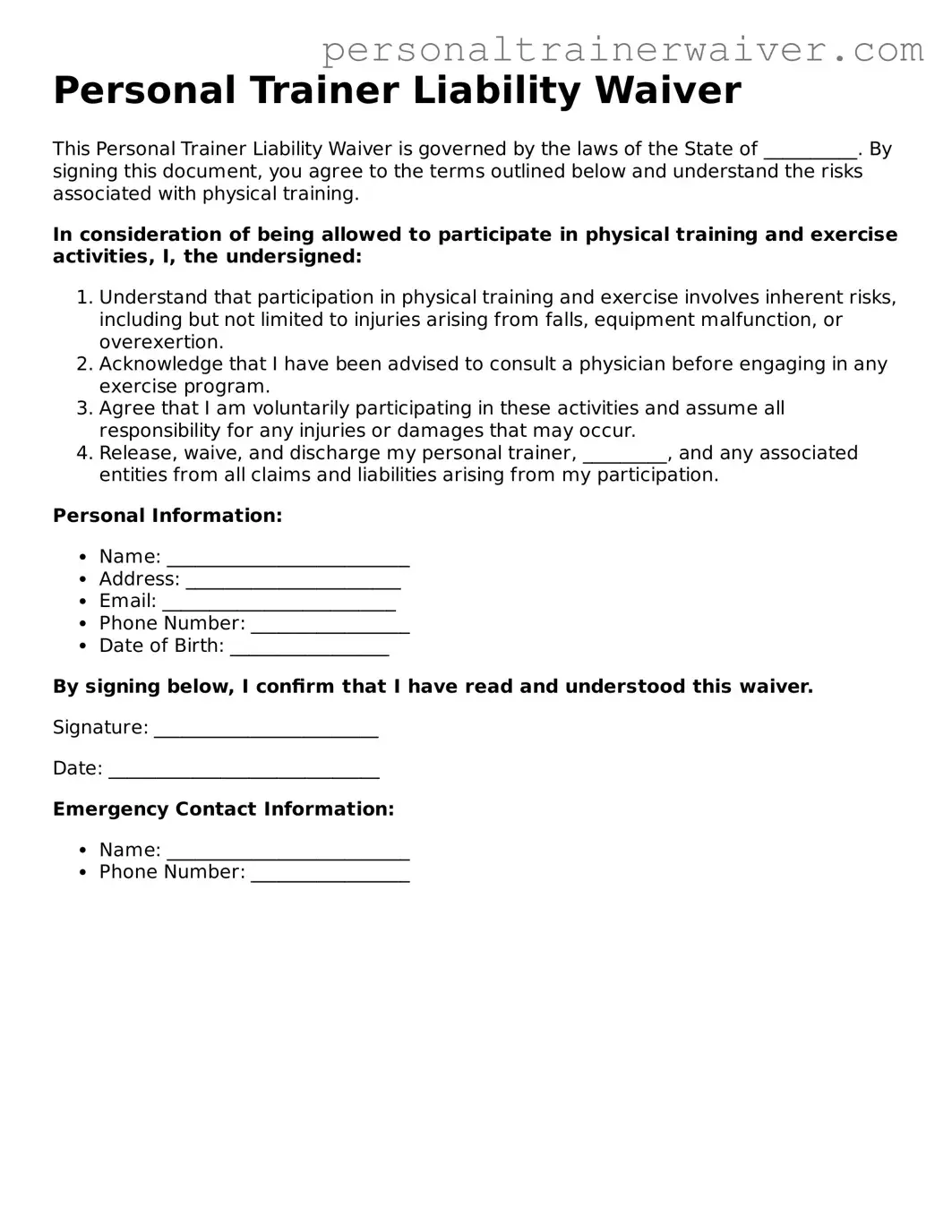Fillable Personal Trainer Liability Waiver Document
The Personal Trainer Liability Waiver form is a crucial document that protects personal trainers from legal claims related to injuries sustained during training sessions. By signing this waiver, clients acknowledge the inherent risks involved in physical activity and agree to release the trainer from liability. Understanding this form is essential for both trainers and clients to ensure a safe and informed training environment.
Get Personal Trainer Liability Waiver Online
